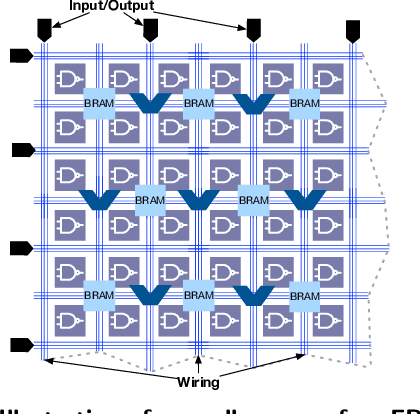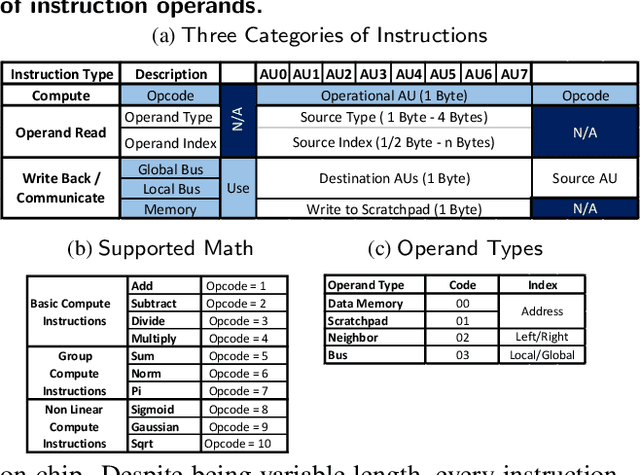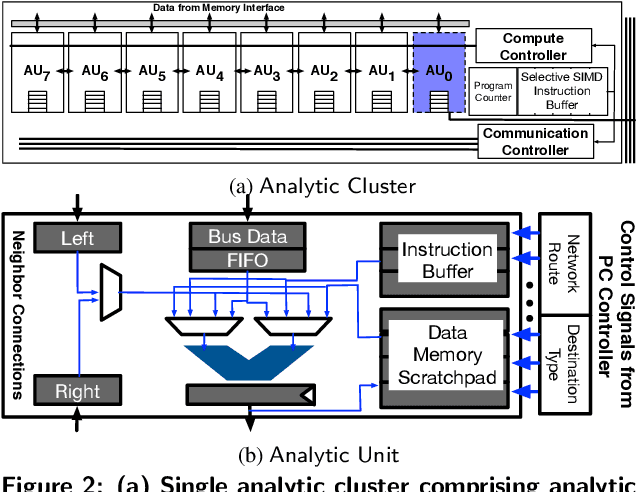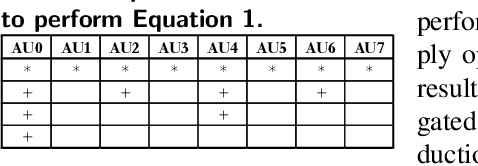In-RDBMS Hardware Acceleration of Advanced Analytics
Paper and Code
Sep 18, 2018



The data revolution is fueled by advances in machine learning, databases, and hardware design. Programmable accelerators are making their way into each of these areas independently. As such, there is a void of solutions that enables hardware acceleration at the intersection of these disjoint fields. This paper sets out to be the initial step towards a unifying solution for in-Database Acceleration of Advanced Analytics (DAnA). Deploying specialized hardware, such as FPGAs, for in-database analytics currently requires hand-designing the hardware and manually routing the data. Instead, DAnA automatically maps a high-level specification of advanced analytics queries to an FPGA accelerator. The accelerator implementation is generated for a User Defined Function (UDF), expressed as a part of an SQL query using a Python-embedded Domain-Specific Language (DSL). To realize an efficient in-database integration, DAnA accelerators contain a novel hardware structure, Striders, that directly interface with the buffer pool of the database. Striders extract, cleanse, and process the training data tuples that are consumed by a multi-threaded FPGA engine that executes the analytics algorithm. We integrate DAnA with PostgreSQL to generate hardware accelerators for a range of real-world and synthetic datasets running diverse ML algorithms. Results show that DAnA-enhanced PostgreSQL provides, on average, 8.3x end-to-end speedup for real datasets, with a maximum of 28.2x. Moreover, DAnA-enhanced PostgreSQL is, on average, 4.0x faster than the multi-threaded Apache MADLib running on Greenplum. DAnA provides these benefits while hiding the complexity of hardware design from data scientists and allowing them to express the algorithm in =30-60 lines of Python.
 Add to Chrome
Add to Chrome Add to Firefox
Add to Firefox Add to Edge
Add to Edge